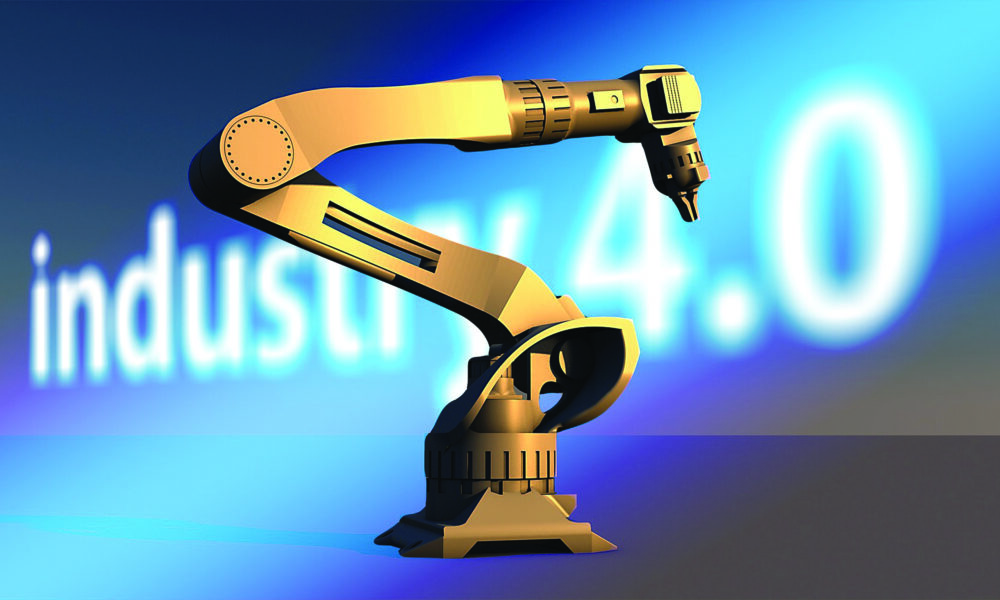India’s Manufacturing Outlook 2021
By OEM Update Editorial March 3, 2021 5:34 pm IST
Looking at the trending opportunities for manufacturing sector, industry experts foresee a global prospects for Indian manufacturing sector, especially with penetration of technologies like AM, AI, IIoT.
Indian manufacturing has emerged as one of the trending sectors in terms of growth. The government of India’s Make in India programme has enabled India to become a global manufacturing hub. Business conditions in the Indian manufacturing remain positive amid a pandemic where the manufacturing component of IIP stood at 129.8 during 2020.
Opportunities under Atmanirbhar Bharat and Vocal for Local
According to Ravi Raghavan, Vice-President, IMTMA, “I think skills and employments aren’t always proportional to their growth because everyone becomes productively. If we talk about opportunities, work processes which was done by 100 people, those jobs are done by 80 people, and the number might be reduced further. So, in future there might be less job for workforce if we start moving faster than human productivity. I think, companies should start doing that so as to emerge as a brand in the industry. This way, we can improve productivity and the product quality then we improve the productivity, and we will be able to create machines to meet consumer demands and their expectations.”
P L Muthusekkar, Managing Director, NORD Drivesystems India Pvt. Ltd., agrees to what Ravi said. It’s time for us to focus more towards increasing our productivity and creating job opportunities. Indonesia has twice the productivity of India, where as China and South Korea’s production is 4 times higher than India. If you look closely towards creation of job opportunities, Indian manufacturing has added around 1 percent of jobs in recent years, whereas the service sector and private sector added 5 percent of employment opportunities.
Legislative support to increase manufacturing sector’s contribution towards GDP
According to Muthusekkar, government spending is very important, and the union budget 2021 has rightly addressed the spending towards manufacturing infrastructure. Also, there’s only 25 – 26 percent of the FDI’s presence in Indian manufacturing sector. Interestingly, FDI’s share towards the service sector is close to 20 percent per year, which means, whatever FDI comes in, 20 percent invariably goes to the service sector, and the manufacturing gets the lowest share. Manufacturing sector had the lowest share of 17 – 18 percent of FDI inflows during 2017 and 2018. So, investments towards the manufacturing sector is increasing, but it will definitely take time to have surplus investments or sufficient investment. Especially with the global giants like Siemens, GE, Tesla preferring to set-up their manufacturing plants in India, we expect an exponential growth in India, especially for the opportunities in local manufacturing.
Role of additive manufacturing technologies in Indian Manufacturing
According to Dr. Jyothish Kumar, President, Additive Manufacturing Society of India (AMSI), Additive manufacturing technologies have been adding up rapid advancements in their applications such as defence, automotive, aerospace, space, consumer products, biomedical, engineering industries and jewelries. If we talk about revolutionising technologies, for aerospace and defense for instance, some of the critical components that cannot be manufactured or machines by other processes, are easily made and manufactured by 3D printing metal 3D printing processes such as laser material, and we’re into manufacturing some components like landing gates, thrust, reverse doors, small surveillance drones, among the others for aerospace and defence sector, along with critical engine components for repairing of turbine blades. So, these applications have a low volume production for high value products with complex design and fantastic fuel efficiency for aircrafts.
For the automotive segment, several components have been manufactured using metal additive manufacturing clay like, intake vaults, engine components, gearboxes, air inlet and engine control units. Most of these components have been manufactured, and are used in most of the cars. This reflect the cost-effective solution. Also, radio manufacturing is turning out to be a cost-effective solution for Indian manufacturing segment. Components which are obsolete, and cannot be retrieved, are manufactured by using the reverse engineering process and 3D printing process. Implementation of these technologies prove that Indian manufacturing sector is revolutionising, along with the healthcare sector.
Re-entering into mainstream manufacturing
“Looking at the present scenario in Indian manufacturing, I think the government has already brought in several initiatives to support and uplift the Indian manufacturing sector. 3 – 4 years ago, we might have sought for government interventions for support, today I don’t think it is that important. Thought we do require do require reform to stabilize the SMEs and MSME sector. So, it’s upto the private sector and the manufacturing sector as how they will take things forward. There are humungous opportunities in India, especially with the “Plus One” strategy. The way our GDP vision has been outlined for $5 trillion, with $1 trillion for manufacturing, every manufacturer will have to expand by two or more times in next five years, only then we can achieve the set target. It’s not as easy as it seems, it might take 5 years for us to reach to that level”, says Muthusekkar. If you consider the scenario few a decade ago, we usually sell off our properties and some assets to get capital investment, but today you don’t have to do that. Today, the decisions depend on the companies, manufacturers and the industries. Unless the industry is willing to move towards progress. Government can only create a ground to work, how to use that ground is on the industries and the manufacturers.
How are we progressing towards the dream of a manufacturing hub
Well, we are progressing towards positively towards make it a reality, it might take time, but yes, it will happen, says Muthusekkar. The essential factor to consider here is the global competitive index, if you are positioned in the global competitive index of top 70 countries, then your growth has been measured and marked. Now that we have plenty of opportunities with Vocal for Local, Atmanirbhar Bharat and Make in India, we will be positioned as a global manufacturing hub in the coming years.
“Along with these initiatives, we must also look upon the changes in trends of China imports. Owing to various trending reasons, the world is looking for opportunities to shift the Chinese market and invest in countries like Vietnam and India because the two countries are the viable options. India, because, from the recent years, we are taking efforts to add the number of skilled labour. So, yes, we are in the right direction. Our NORD products like motors and gearboxes are used by various industries, including the defence spacecrafts, aircrafts”, adds Muthusekkar.
Ravi adds that there are several companies, various sectors who demonstrated success by implementing connected warehousing, centralised warehousing and automation, and some of the sectors are in process of catering world’s requirement. Biggest advantage for India is, we have a domestic market. We need to scale up to remain competitive in the industry, and the key for that is -remain productive as far as you can and as long as you can. You must also realise the domestic market requirement so as to get the financial benefits, along with an experience to serve global markets. e. Now, industry 4.0 is another area that may be a blessing in disguise for us. That’s strength of it combined with our you know, OT when both of that convergence happens, I think we can build a newer manufacturing model for India which no other country has followed. And that can be a niche way of us to take that step forward.
Moving ahead with Industrial Revolution, Digitisation and Industry 5.0Digitalisation has taken its right shape during the COVID period, says Muthusekkar. It was although visualised 15 years ago, but results have been evident, especially during the pandemic, and in abundance. It was probably the fastest progress ever in terms of digitalization. Several organisations had difficulties to educate their work force with the impacts and benefits of digitalization. When we have this level of interest with all required investments and framework support both from the industries and from the government establishing a start-up becomes easy, so I think we are in a right direction towards achieving success and will become a manufacturing hub in coming years.
“Today, the government of India has come up with a policy where I am also one of the expert committee members to draft the policy which primarily talks about providing required and suitable training to our workforce, as a part of its skill development programme and create a workforce who can be industry ready. The government and the engineers will be industry ready with all the advanced courses and skills in terms of a 3D design for additive manufacturing, 3d printing record as engineers and diploma holders for all these medical workforce segment, we need to provide them a skill and make them industry ready. So, when there is a huge demand in the industry. So, we have to be ready. And this is what we have been doing with the Government of India”, added Dr. Jyothish.
Future of Indian Manufacturing
Automobile sector has been a significant part of our businesses as they are the biggest consumers of machine tools, but the entry of other sectors seems to create a promising future of machine tools sector. Apart from the infrastructural growth, we see an exponential growth in the commercial vehicles segment, and this will intensify more in the future. “Also, a lot of investments are coming in for the railways, defence, equipment, machines. Moreover, with privatization and with opportunities created under Atmanirbhar Bharat and Vocal for Local, we can expect sea of opportunities to increase the capacity of Indian manufacturing as a lot of companies have started making machine and technologies locally”, says Ravi.
“Healthcare is going to be one of the biggest sectors, along with the aerospace. Of course, then aerospace needs a technology like additive manufacturing it has huge component. Space and ISRO need critical components like fuel tanks, which cannot be machined as the material which is involved in machining of this is a tantalum which is expensive than gold, you can’t use machine and waste tantalum. So, but the technology lets you to build a huge tank at reduced cost and time. So, these are the segments and automotive is already in the flow, though many of the critical components to reduce time and cost are being manufactured and some of the components are being used in engines is going to grow in all the segments,” Dr. Jyothish said.
The best times when you really look inwards, and see what you’re doing right what you’re doing wrong, we also looked at what we are doing well, what is our strength and how far we can grow and what our weaknesses are, we can share it. It has been probably a very good phase for us, we learned a lot. “Digitization was always a very important thing in our company for last three years. Any initiative, anything we will undertake unless there is a digital intervention in that. So with this pandemic, it only speeded up, what we wanted to do in next three years, probably we started doing in next few months,” says Muthusekkar.
Quotes –
Government policies and reforms are creating an impact by widening the aspects for local businesses across various segments.
Ravi Raghavan, Vice President, IMTMA
———————————–
Global market is looking to shift from the Chinese market and invest in India because we are the only viable option for the world to shift their business from China.
P L Muthusekkar, MD, NORD Drivesystems India Pvt. Ltd.
———————————–
Successful implementation of AM technologies have been revolutionising the manufacturing, automobile and healthcare sector.
Dr. Jyothish Kumar, President, AMSI
Cookie Consent
We use cookies to personalize your experience. By continuing to visit this website you agree to our Terms & Conditions, Privacy Policy and Cookie Policy.


















